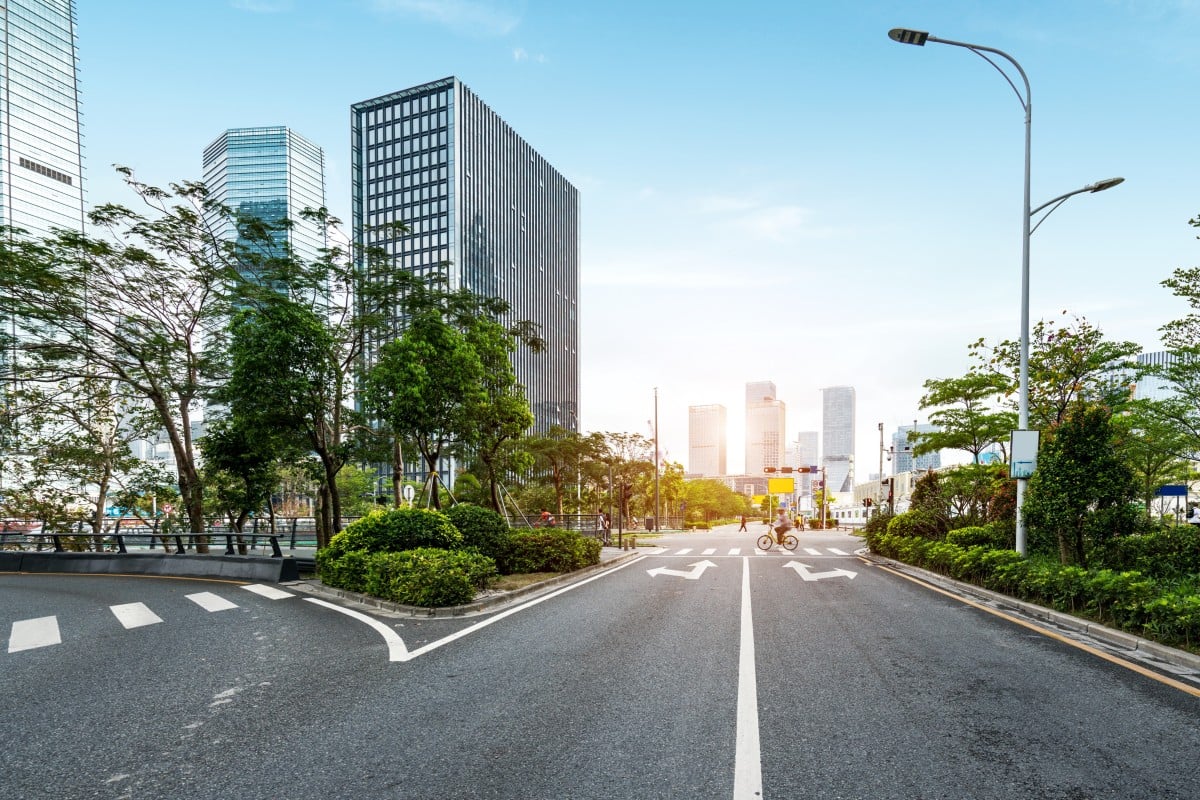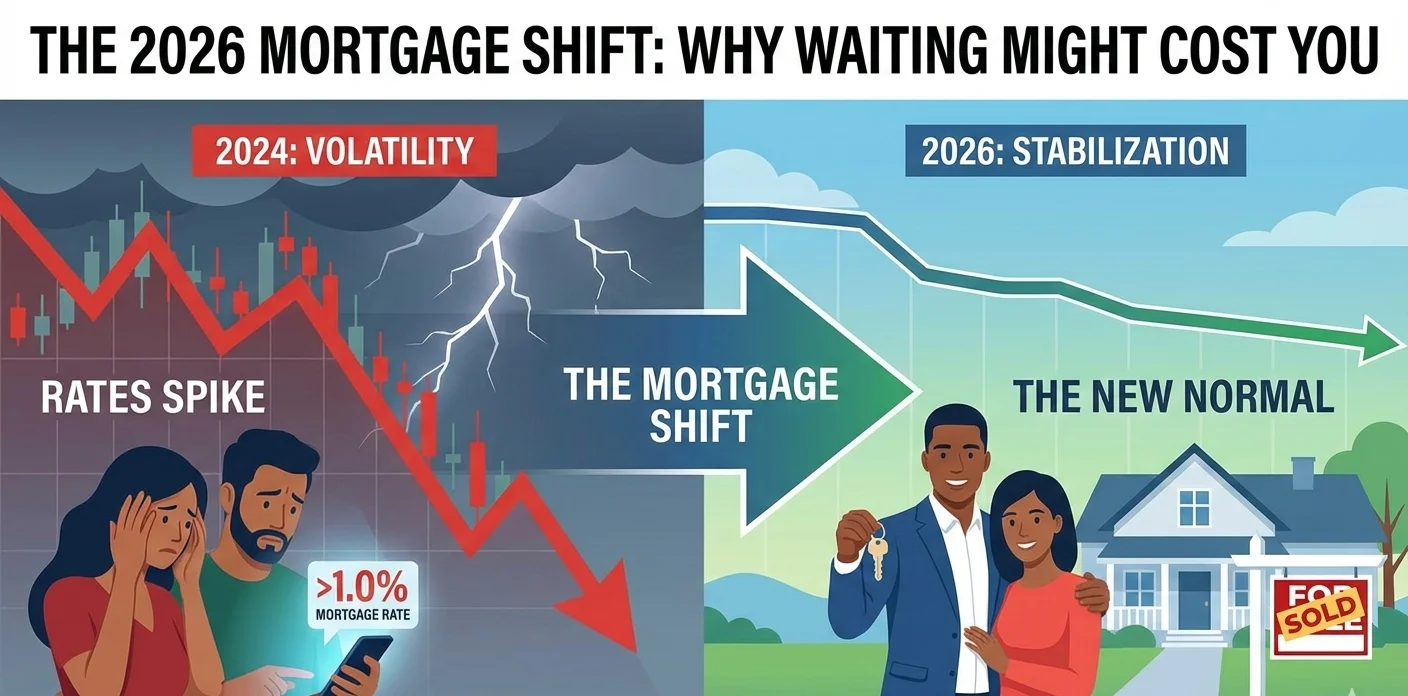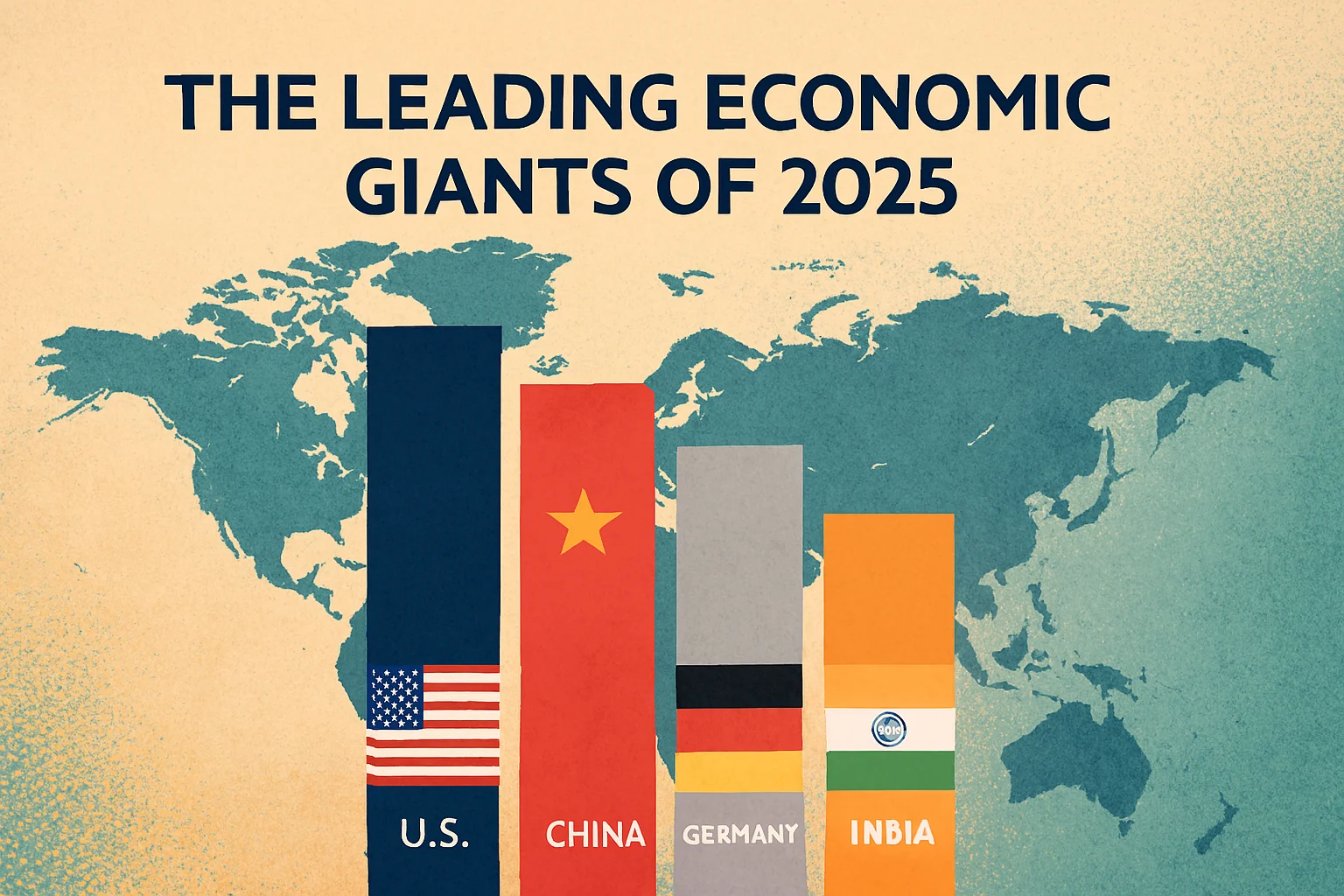Analysis
Shenzhen’s Revolutionary Move: Opening Highways for Autonomous Vehicle Trials

Introduction
In a groundbreaking development, the bustling Chinese tech hub of Shenzhen is set to revolutionize the automotive industry by opening specific sections of city highways for autonomous vehicle trials. This visionary move not only underscores Shenzhen’s commitment to innovation but also signals a significant step towards the future of transportation.
The Road to Autonomy
The advent of autonomous vehicles has sparked a global race to harness the potential of this transformative technology. Shenzhen, often referred to as China’s Silicon Valley, has positioned itself at the forefront of this race. With its vibrant tech ecosystem and unwavering commitment to pushing the boundaries of innovation, the city is an ideal testbed for autonomous vehicles.
The Strategic Infrastructure
To facilitate these trials, Shenzhen is strategically opening sections of its well-maintained and state-of-the-art city highways. This initiative aims to create a controlled environment where autonomous vehicles can be tested rigorously and comprehensively. The selected highways have been chosen for their diverse set of challenges, including high traffic volumes, complex intersections, and variable weather conditions, ensuring that the trials cover a wide range of real-world scenarios.
Collaborative Efforts
Shenzhen’s move towards autonomous vehicle trials is not a solitary endeavor. It reflects a collaborative effort between government agencies, technology companies, and academic institutions. This synergy ensures that the trials are conducted with the highest level of expertise and safety.
Government agencies have played a pivotal role in creating a conducive regulatory environment for autonomous vehicle testing. They have worked diligently to establish clear guidelines and safety protocols to govern the trials, prioritizing the safety of both the vehicles and the public.
Leading technology companies have seized this opportunity to showcase their prowess in the autonomous driving space. By actively participating in these trials, they aim to refine their technology and demonstrate its readiness for mass adoption.
Academic institutions have lent their expertise to the trials by conducting research, collecting data, and offering insights into the performance of autonomous vehicles in real-world conditions. This collaborative approach ensures that the trials are not only cutting-edge but also data-driven and scientifically rigorous.
The Benefits of Shenzhen’s Initiative
Shenzhen’s decision to open city highways for autonomous vehicle trials carries a multitude of benefits, both for the city and the broader automotive industry.
1. Accelerated Technological Advancements
By providing a controlled testing environment, Shenzhen enables technology companies to accelerate the development of autonomous vehicle technology. This means that we are one step closer to experiencing safer and more efficient transportation options.
2. Job Creation and Economic Growth
The initiative also has significant economic implications. As autonomous vehicle technology matures, it opens up new avenues for job creation and economic growth. Shenzhen, with its thriving tech sector, is well-positioned to capitalize on these opportunities, potentially becoming a global hub for autonomous vehicle research and development.
3. Enhanced Safety and Efficiency
Autonomous vehicles have the potential to revolutionize road safety by significantly reducing accidents caused by human error. Shenzhen’s trials will contribute valuable data and insights towards achieving this goal, making our roads safer for everyone.
4. Environmental Benefits
Autonomous vehicles are typically more energy-efficient than traditional vehicles. As Shenzhen’s trials pave the way for increased adoption of autonomous transportation, we can expect a positive impact on the environment, with reduced carbon emissions and improved air quality.
The Road Ahead
As we look to the future, it’s evident that Shenzhen’s decision to open its highways for autonomous vehicle trials is a pivotal moment in the evolution of transportation. This move showcases the city’s commitment to innovation, safety, and economic growth.
It’s not just about testing autonomous vehicles; it’s about shaping the future of mobility. Shenzhen’s initiative will undoubtedly influence the global automotive industry, setting new standards and driving us closer to a world where autonomous vehicles are an integral part of our daily lives.
Conclusion
Shenzhen, renowned for its cutting-edge technology, is making a bold move towards the future with its autonomous vehicle trials on city highways. This visionary initiative holds immense potential to reshape the automotive landscape, igniting innovation, enhancing road safety, and propelling economic growth. With its unwavering focus on pushing boundaries, Shenzhen is at the forefront of a global movement towards a world powered by autonomous vehicles. As the attention of the world turns towards Shenzhen, it becomes evident that this city’s determination is driving us closer to a future where self-driving cars are more than just a dream; they are becoming an everyday reality.
Discover more from Startups Pro,Inc
Subscribe to get the latest posts sent to your email.
Startups
The 2026 Mortgage Shift: Why Waiting for “Perfect” Might Cost You

Plus: The “New Normal” for rates and what it means for your wallet.
Is the 2026 housing market finally turning a corner? We break down the latest mortgage trends, rate forecasts, and why waiting for the “perfect” dip might backfire.
Key Takeaways:
- The Trend: Mortgage rates are stabilizing, moving away from the volatility of previous years.
- The Trap: Trying to time the absolute bottom of the market is causing buyers to miss good inventory.
- The Move: Smart buyers are prioritizing “marrying the house and dating the rate” as 2026 approaches.
It’s a familiar scene: It’s 11:30 PM on a Tuesday. You’re lying in bed, blue light from your phone illuminating the room, doom-scrolling through Zillow. You find a house you love, but then you toggle over to a mortgage calculator, punch in the current rate, and feel your stomach drop.
If this sounds like you, you aren’t alone. For the last two years, the American dream of homeownership has felt more like a math test that nobody studied for.
But here is the news you’ve been waiting for: As we close out 2025 and look toward 2026, the mortgage landscape is finally shifting. It’s not the free-fall drop everyone prayed for, but it’s something arguably better—stability.
The State of the Mortgage: December 2025
For the first time in a long time, the bond market is taking a breath. After a year of “will-they-won’t-they” with the Federal Reserve, we are seeing mortgage rates settle into a tighter range.
Why does this matter? Because volatility is the enemy of the homebuyer. When rates swing wildly from week to week, it’s impossible to budget. Today’s stabilization means that for the first time in 18 months, the monthly payment you calculate today is likely the payment you’ll actually get at the closing table.
The “New Normal” Calculation
Let’s look at the real-world math.
- Then (Early 2024): A $400,000 loan at peak rates felt suffocating.
- Now (Late 2025): With rates moderating, that same loan saves you hundreds per month compared to the peak.
While we aren’t back to the unicorn days of 3% rates (and leading economists suggest we may never be again), the current mortgage environment is far more manageable. The panic is leaving the market, replaced by a more traditional supply-and-demand dynamic.
Mortgage Rates Forecast 2026: What the Experts Are Seeing
The million-dollar question remains: Should I wait for rates to drop lower in 2026?
It’s the gamble of the decade. Most housing market predictions for 2026 suggest a slow, steady decline in rates, but there is a catch.
The Inventory Trap “If rates drop to 5.5% or 5%, we aren’t just going to see happy buyers; we’re going to see all the buyers,” notes leading industry analyst Sarah Jenkins.
Here is the paradox: If mortgage rates plummet in early 2026, demand will skyrocket. When demand skyrockets in a low-inventory market, home prices go up. You might save $200 a month on your interest rate, but you could end up paying $30,000 more for the house—and facing a bidding war to get it.
30-Year Fixed Mortgage Trends
The 30-year fixed mortgage remains the gold standard, but the spread between it and the 10-year Treasury yield is narrowing. This technical shift is a good sign for consumers. It means lenders are feeling less risk, which usually translates to more competitive offers for you.
Smart Moves for First-Time Homebuyers
If you are tired of sitting on the sidelines, here is how to win in the current market.
1. The “Date the Rate” Strategy is Still Valid
Don’t let a quarter-percentage point stop you from buying the right home. If you find a property with good bones in a great neighborhood, secure it. You can always look into mortgage refinancing rates later if the market takes a significant dip in 2026 or 2027. You can refinance a loan; you cannot refinance the purchase price.
2. Boost Your Credit Score Now
In 2025, lenders are tier-sensitive. The difference between a 720 and a 760 credit score can change your rate significantly. Pay down high-interest credit cards before applying for a mortgage to boost your debt-to-income ratio.
3. Ask About Buy-Downs
Sellers are still willing to negotiate. Instead of asking for a price reduction, ask the seller to pay for a “2-1 Buy-Down.” this temporarily lowers your mortgage interest rate for the first two years, giving you lower payments now while you wait for rates to naturally settle.
The Verdict
Is now the right time? If you are looking for an investment purely based on interest rate arbitrage, maybe you wait. But if you are looking for a home—a place to paint the walls and park your car—the stabilization of late 2025 offers a window of opportunity.
The mortgage market has calmed down. The question is, are you ready to jump in before the 2026 rush?
Discover more from Startups Pro,Inc
Subscribe to get the latest posts sent to your email.
Analysis
The Leading Economic Giants of 2025: Fourth Quarter Insights as December Ends

Introduction
As December 2025 draws to a close, the global economy stands at a fascinating crossroads. The fourth quarter has revealed both continuity and disruption: familiar giants, such as the United States and China, continue to dominate, while rising powers, including India and Germany, reshape the hierarchy. The chessboard of global GDP leaders is shifting, and the implications for trade, investment, and geopolitics are profound.
This article provides a data-driven analysis of the leading economic giants of 2025, comparing nominal GDP, purchasing power parity (PPP), and growth trajectories. It integrates authentic statistics from the IMF, OECD, and Fitch Ratings, while embedding SEO-rich
United States – Still the Nominal Leader
The United States remains the world’s largest economy in nominal terms, with GDP estimated at $29 trillion in 2025. Growth has moderated to around 2%, reflecting a mature cycle but supported by robust consumer spending and AI-driven productivity gains.
- Inflation: ~2.75%, easing from earlier highs.
- Monetary Policy: The Federal Reserve has begun rate cuts, balancing inflation control with growth support.
- Sectoral Strength: Technology, healthcare, and financial services continue to anchor resilience.
Despite China’s PPP dominance, the U.S. retains unmatched influence in global capital markets, innovation ecosystems, and reserve currency status.
China – Closing the Gap
China’s economy has expanded to nearly $26 trillion nominal GDP, with growth around 4.8% in 2025. On a PPP basis, China leads the world, outpacing the U.S. by an estimated Int. $10.4 trillion.
- Exports: Strong performance in EVs, semiconductors, and renewable energy.
- Domestic Demand: Rising middle-class consumption continues to drive growth.
- Challenges: Property sector fragility and demographic headwinds remain.
China’s ability to sustain growth above advanced economies underscores its role as a global GDP leader 2025, though questions linger about structural reforms.
India – The Rising Star
India has emerged as the fastest-growing major economy, with GDP growth near 6% in 2025. Its nominal GDP is projected at $4.8 trillion, positioning it to surpass Japan by 2026 and claim the fourth-largest spot globally.
- Drivers: Digital economy expansion, infrastructure investment, and strong domestic demand.
- Demographics: A youthful workforce contrasts sharply with aging populations in advanced economies.
- Global Role: Increasing influence in supply chains, fintech, and renewable energy.
India’s trajectory exemplifies the emerging markets rise 2025, making it a focal point for investors and policymakers alike.
Germany – Europe’s Anchor
Germany solidified its position as the third-largest economy, overtaking Japan in 2023 and maintaining momentum in 2025. With GDP around $5.5 trillion, Germany anchors the Eurozone, which grew at 1.4% in 2025.
- Industrial Strength: Automotive, engineering, and green technologies.
- Policy Focus: Energy transition and fiscal discipline.
- Resilience: Despite global headwinds, Germany’s export machine remains robust.
Germany’s role as Europe’s anchor highlights the Eurozone Q4 outlook, balancing stability with innovation.
Japan & Emerging Markets
Japan, once the world’s second-largest economy, has slipped to fifth place with GDP around $4.7 trillion. Growth remains sluggish (~1%), constrained by demographics and deflationary pressures.
Meanwhile, emerging markets such as Brazil, Indonesia, and Nigeria are showing resilience. Their collective growth underscores the global growth forecasts 2025, with commodity exports, digital adoption, and regional trade blocs driving momentum.
Comparative Data Table
| Country | Nominal GDP (2025 est.) | Growth Rate | PPP Position |
|---|---|---|---|
| US | $29T | 2% | #2 |
| China | $26T | 4.8% | #1 |
| Germany | $5.5T | 1.4% | #4 |
| India | $4.8T | 6% | #3 |
| Japan | $4.7T | 1% | #5 |
Conclusion – Looking Ahead to 2026
As 2025 ends, the economic giants Q4 2025 analysis reveals a reshaped hierarchy. The U.S. remains the nominal leader, China dominates PPP, India rises rapidly, and Germany anchors Europe. Emerging markets add dynamism to the global outlook.
Looking ahead to 2026:
- AI-driven productivity will offset demographic challenges.
- Green energy transition will redefine industrial competitiveness.
- Geopolitical risks (trade tensions, regional conflicts) will test resilience.
The economic outlook 2026 suggests a world where power is more distributed, innovation is more global, and competition is more intense.
Discover more from Startups Pro,Inc
Subscribe to get the latest posts sent to your email.
Analysis
Editorial Deep Dive: Predicting the Next Big Tech Bubble in 2026–2028

It was a crisp evening in San Francisco, the kind of night when the fog rolls in like a curtain call. At the Yerba Buena Center for the Arts, a thousand investors, founders, and journalists gathered for what was billed as “The Future Agents Gala.” The star attraction was not a celebrity CEO but a humanoid robot, dressed in a tailored blazer, capable of negotiating contracts in real time while simultaneously cooking a Michelin-grade risotto.
The crowd gasped as the machine signed a mock term sheet projected on a giant screen, its agentic AI brain linked to a venture capital fund’s API. Champagne flutes clinked, sovereign wealth fund managers whispered in Arabic and Mandarin, and a former OpenAI board member leaned over to me and said: “This is the moment. We’ve crossed the Rubicon. The next tech bubble is already inflating.”
Outside, a line of Teslas and Rivians stretched down Mission Street, ferrying attendees to afterparties where AR goggles were handed out like party favors. In one corner, a partner at one of the top three Valley VC firms confided, “We’ve allocated $8 billion to agentic AI startups this quarter alone. If you’re not in, you’re out.” Across the room, a sovereign wealth fund executive from Riyadh boasted of a $50 billion allocation to “post-Moore quantum plays.” The mood was euphoric, bordering on manic. It felt eerily familiar to anyone who had lived through the dot-com bubble of 1999 or the crypto mania of 2021.
I’ve covered four major bubbles in my career — PCs in the ’80s, dot-com in the ’90s, housing in the 2000s, and crypto/ZIRP in the 2020s. Each had its own soundtrack of hype, its own cast of villains and heroes. But what I witnessed in November 2025 was different: a collision of narratives, a tsunami of capital, and a retail investor base armed with apps that can move billions in seconds. The signs of the next tech bubble are unmistakable.
Historical Echoes
Every bubble begins with a story. In 1999, it was the promise of the internet democratizing commerce. In 2021, it was crypto and NFTs rewriting finance and art. Today, the narrative is agentic AI, AR/VR resurrection, and quantum supremacy.
The parallels are striking. In 1999, companies with no revenue traded at 200x forward sales. Pets.com became a household name despite selling dog food at a loss. In 2021, crypto tokens with no utility reached market caps of $50 billion. Now, in late 2025, robotics startups with prototypes but no customers are raising at $10 billion valuations.
Consider the table below, comparing three bubbles across eight metrics:
Metric Dot-com (1999–2000) Crypto/ZIRP (2021–2022) Emerging Bubble (2025–2028) Valuation multiples 200x sales 50–100x token revenue 150x projected AI agent ARR Retail participation Day traders via E-Trade Robinhood, Coinbase Tokenized AI shares via apps Fed policy Loose, then tightening ZIRP, then hikes High rates, capital trapped Sovereign wealth Minimal Limited $2–3 trillion allocations Corporate cash Modest Buybacks dominant $1 trillion redirected to AI/quantum Narrative strength “Internet changes everything” “Decentralization” “Agents + quantum = inevitability” Crash velocity 18 months 12 months Predicted 9–12 months Global contagion US-centric Global retail Truly global, sovereign-driven
The echoes are deafening. The question is not if but when will the next tech bubble burst.
The Three Horsemen of the Coming Bubble
Agentic AI + Robotics
The hottest narrative is agentic AI — autonomous systems that act on behalf of humans. Figure, a humanoid robotics startup, has raised $2.5 billion at a $20 billion valuation despite shipping fewer than 50 units. Anduril, the defense-tech darling, is pitching AI-driven battlefield agents to Pentagon brass. A former OpenAI board member told me bluntly: “Agentic AI is the new cloud. Every corporate board is terrified of missing it.”
Retail investors are piling in via tokenized shares of robotics startups, available on apps in Dubai and Singapore. The valuations are absurd: one startup projecting $100 million in revenue by 2027 is already valued at $15 billion. Is AI the next tech bubble? The answer is staring us in the face.
AR/VR 2.0: The Metaverse Resurrection
Apple’s Vision Pro ecosystem has reignited the metaverse dream. Meta, chastened but emboldened, is pouring $30 billion annually into AR/VR. A partner at Sequoia told me off the record: “We’re seeing pitch decks that look like 2021 all over again, but with Apple hardware as the anchor.”
Consumers are buying in. AR goggles are marketed as productivity tools, not toys. Yet the economics are fragile: hardware margins are thin, and software adoption is speculative. The next dot com bubble may well be wearing goggles.
Quantum + Post-Moore Semiconductor Mania
Quantum computing startups are raising at valuations that defy physics. PsiQuantum, IonQ, and a dozen stealth players are promising breakthroughs by 2027. Meanwhile, post-Moore semiconductor firms are hyping “neuromorphic chips” with little evidence of scalability.
A Brussels regulator told me: “We’re seeing lobbying pressure from quantum firms that rivals Big Tech in 2018. It’s extraordinary.” The hype is global, with Chinese funds pouring billions into quantum supremacy plays. The AI bubble burst prediction may hinge on quantum’s failure to deliver.
The Money Tsunami
Where is the capital coming from? The answer is everywhere.
- Sovereign wealth funds: Abu Dhabi, Riyadh, and Doha are allocating $2 trillion collectively to tech between 2025–2028.
- Corporate treasuries: Apple, Microsoft, and Alphabet are redirecting $1 trillion in cash from buybacks to strategic AI/quantum investments.
- Retail investors: Apps in Asia and Europe allow fractional ownership of AI startups via tokenized assets.
A Wall Street banker told me: “We’ve never seen this much dry powder chasing so few narratives. It’s a venture capital bubble 2026 in the making.”
Charts show venture funding in Q3 2025 hitting $180 billion globally, surpassing the peak of 2021. Sovereign allocations alone dwarf the dot-com era by a factor of ten. The signs of the next tech bubble are flashing red.
The Cracks Already Forming
Yet beneath the euphoria, cracks are visible.
- Revenue reality: Most agentic AI startups have negligible revenue.
- Hardware bottlenecks: AR/VR adoption is limited by cost and ergonomics.
- Quantum skepticism: Physicists quietly admit breakthroughs are unlikely before 2030.
Regulators in Washington and Brussels are already drafting rules to curb AI agents in finance and defense. A senior EU official told me: “We will not allow autonomous systems to trade securities without oversight.”
Meanwhile, retail investors are overexposed. In Korea, 22% of household savings are now in tokenized AI assets. In Dubai, AR/VR tokens trade like penny stocks. Is there a tech bubble right now? The answer is yes — and it’s accelerating.
When and How It Pops
Based on historical cycles and current capital flows, I predict the bubble peaks between Q4 2026 and Q2 2027. The triggers will be:
- Regulatory clampdowns on agentic AI in finance and defense.
- Quantum delays, with promised breakthroughs failing to materialize.
- AR/VR fatigue, as consumers tire of expensive goggles.
- Liquidity crunch, as sovereign wealth funds pull back in response to geopolitical shocks.
The correction will be violent, sharper than dot-com or crypto. Retail apps will amplify panic selling. Tokenized assets will collapse in hours, not months. The next tech bubble burst will be global, instantaneous, and brutal.
Who Gets Hurt, Who Gets Rich
The losers will be retail investors, late-stage VCs, and sovereign funds overexposed to hype. Figure, Anduril, and quantum pure-plays may 10x before crashing to near-zero. Apple’s Vision Pro ecosystem plays will soar, then collapse as adoption stalls.
The winners will be incumbents with real cash flow — Microsoft, Nvidia, and TSMC — who can weather the storm. A few VCs who resist the mania will emerge as heroes. One Valley veteran told me: “We’re sitting out agentic AI. It smells like Pets.com with robots.”
History suggests that those who short the bubble early — hedge funds in New York, sovereigns in Norway — will profit handsomely. The next dot com bubble redux will crown new villains and heroes.
The Bottom Line
The next tech bubble will not be a slow-motion phenomenon like housing in 2008 or crypto in 2021. It will be a compressed, violent cycle — inflated by sovereign wealth funds, corporate treasuries, and retail apps, then punctured by regulatory shocks and technological disappointments.
I’ve covered bubbles for 35 years, and the pattern is unmistakable: the louder the narrative, the thinner the fundamentals. Agentic AI, AR/VR resurrection, and quantum computing are extraordinary technologies, but they are being priced as inevitabilities rather than possibilities. When the correction comes — between late 2026 and mid-2027 — it will erase trillions in paper wealth in weeks, not years.
The winners will be those who recognize that hype is not the same as adoption, and that capital cycles move faster than technological ones. The losers will be those who confuse narrative with inevitability.
The bottom line: The next tech bubble is already here. It will peak in 2026–2027, and when it bursts, it will be larger in scale than dot-com but shorter-lived, leaving behind a scorched landscape of failed startups, chastened sovereign funds, and a handful of resilient incumbents who survive to build the real future.
Discover more from Startups Pro,Inc
Subscribe to get the latest posts sent to your email.
-
Digital5 years ago
Social Media and polarization of society
-
Digital5 years ago
Pakistan Moves Closer to Train One Million Youth with Digital Skills
-
Digital5 years ago
Karachi-based digital bookkeeping startup, CreditBook raises $1.5 million in seed funding
-
News5 years ago
Dr . Arif Alvi visits the National Museum of Pakistan, Karachi
-
Digital5 years ago
WHATSAPP Privacy Concerns Affecting Public Data -MOIT&T Pakistan
-
Kashmir5 years ago
Pakistan Mission Islamabad Celebrates “KASHMIRI SOLIDARITY DAY “
-
Business4 years ago
Are You Ready to Start Your Own Business? 7 Tips and Decision-Making Tools
-
China5 years ago
TIKTOK’s global growth and expansion : a bubble or reality ?























